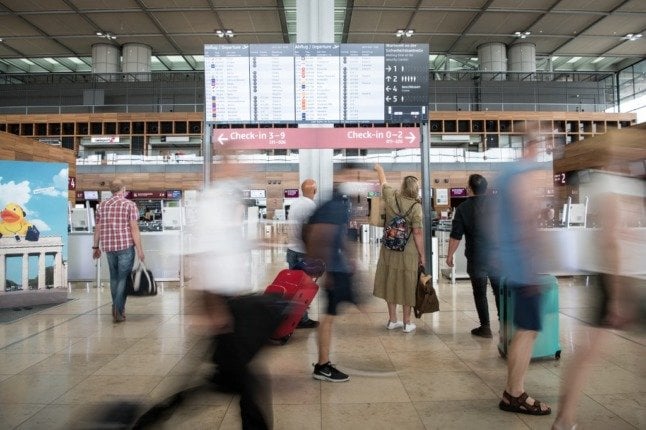The move is part of the Commission’s plans for a European Travel Information and Authorisation System (ETIAS) – and will affect all visitors coming from visa-exempt countries who are travelling to Sweden, or any other Schengen zone country.
A list of countries whose nationals need a visa to enter Sweden can be found on the government’s website, so the new fee would apply to travellers from non-EU countries which are not on that list, including Australia, Brazil, Canada, Japan, South Korea, the UK and the US for example.
From the end of 2022 UK travellers will have to get authorisation and pay €7 to enter the EU's Schengen zone (fee covers multiple visits over three years).
European commission announced today its European Travel Information and Authorisation System is on track.
— Jennifer Rankin (@JenniferMerode) August 3, 2021
“Once ETIAS is in place, non-EU citizens travelling to the Schengen area who are exempt from the visa requirement will need to register and obtain an authorisation before travelling,” said the Commission in a press release.
“The system will cross-check travellers against EU information systems for internal security, borders and migration before their trip, helping to identify ahead of time people who may pose a risk to security or health, as well as compliance with migration rules.”
The move is part of the EU’s phasing-in plan for external border management with the ETIAS system aimed at boosting security to prevent crime and terrorism as well control migration.
Travellers affected will have to fill in an online application form which will have to be approved.
The Commission said on Tuesday the “vast majority of cases (expected to be over 95%) will result in automatic approval”.
“In limited cases, where further checks on the traveller are needed, the issuing of the travel authorisation could take up to 30 days,” the EU Commission says.
The ETIAS authorisation will be a €7 one-off fee, and will be valid for three years as well as for multiple entries into Schengen states during that time.
Applicants will be able to apply via an official website and/or app for mobile devices, the Commissions says.
Which countries are affected?
In general, visas are required for entry to EU countries for non-EU nationals.
But a visa is not needed for visits of up to 90 days in an 180‑day period for nationals of countries for which the European Community has abolished the visa requirement.
At the moment for instance, British passport holders who do not hold a residence title in an EU country, can enter Europe for short visits and tourist trips without having to pay a fee or organise a visa – although Covid restrictions have made travel a lot trickier.
The EU Commission said the ETIAS will not change “which non-EU countries are subject to a visa requirement and will also not introduce a new visa requirement for nationals of countries that are visa-exempt”.
When will it happen?
We haven’t got an exact date yet but the EU Commission says it will happen by the end of 2022.
The date from which travellers will be able to apply will be published on this site.
According to the EU “ETIAS will be a largely automated IT system created to identify security, irregular migration or high epidemic risks posed by visa-exempt visitors travelling to the Schengen States, whilst at the same time facilitate crossing borders for the vast majority of travellers who do not pose such risks.”



 Please whitelist us to continue reading.
Please whitelist us to continue reading.
Member comments